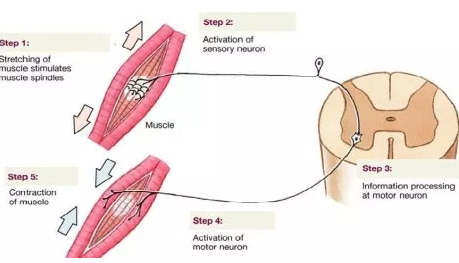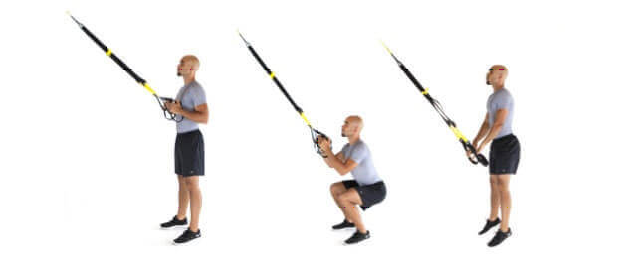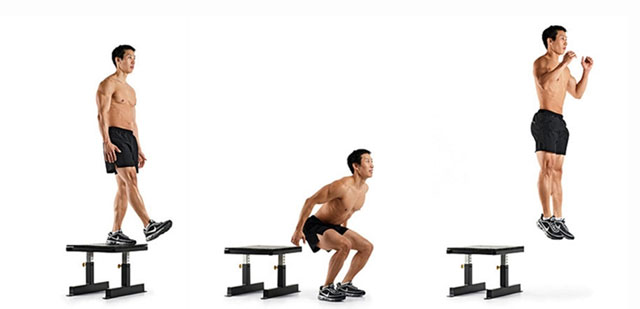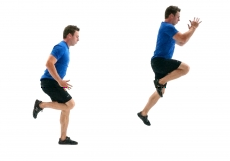Rehabbing with Plyometrics
- SFitnessPlans
- Jan 13, 2020
- 3 min read
Plyometrics: If you've never heard of plyometrics, here is a vague idea: Plyometrics simply put is a loaded eccentric contraction into an immediate concentric contraction. The lengthening muscle shortens as quickly as possible via a stretch reflex. A stretch reflex is the system by which the body controls and inhibits the rate of a muscle lengthening, via a few electronics. The body reacts and contracts the lengthened muscle.
Rehabbing, to be clear this means more to us than being able to sit, stand and walk up stairs, as per the NHS definition. It means getting a client as close to complete function as possible and hopefully, as with most of our clients, more function than they had pre-injury.

The mechanism is something called a stretch shortening cycle. Not important to know in any great detail, other than to know it's the system by which you can progressively overload plyometric modalities, which is extremely important. Along with conditioning and controlled isolation of the healing tissue, plyometrics has been a first draft tool in my box of tricks when rehabbing clients, especially with knee and ankle injuries. It's important to say at this point, timing is extremely important. Appropriate time should be observed between injury date or surgery date and the day you start implementing plyometrics. As a rule you need to 1) see most of the chronic inflammation dissipated and 2) allow enough time for the collagen to impact upon the wound site (i.e. a minimum of 12 weeks, although this continues for up to 6+ months). In this blog I'll talk about the exercises related to the progression. What I won't do is give you any specific numbers (i.e. reps, sets, rest periods, workout to workout mapping and bio-mechanical progressions) because there is a Mini Book Of Massive Workouts: Rehab Volume coming shortly where there will be enough page space. If you can't wait for the E-book then email us for personal programming.
Starting with the easiest.. weird huh..
Suspension Trainer Squat Jumps, or as I like to tell my clients squat "pops"and not just because I'm adorable. The idea is to use the handles of your suspension trainer and a jump to slightly leave the ground, land softly and then slightly leave the ground again, without pause, repeated as necessary. This introduces the idea of impact into a stretch with an instant concentric contraction to follow. It's easier to control your body as your hands are on the suspension trainer and therefore the jump and landing are safe and lower impact.

Next Depth Jumps. Stand on a low box and jump off it. This can be daunting at first and is usually a massive step in a person's rehab, because of the confidence generated by being able to trust their body again. As a generic rule, don't start any higher than 12 inches (30cm). Both feet should land at the same time, with an effort to land as quietly and softly as possible. The progression within the exercise is to increase the mass at impact. You can do this by manipulating the depth of the jump and the speed of the concentric contraction upon impact i.e. increasing the box height and adding a jump upon impact, as seen below.

Once you have manipulated the stretch reflex bilaterally, using both legs, allowing the uninjured limb to help the injured limb, then it's time to implement Unilateral Loading, using the limb in isolation. Start by Hopping on to a box no more than 6 inches (15cm) off the ground. This will allow you to build confidence in impact and lateral stability without the risk of re-injury. This skill can then be transferred to unilateral bounding: hopping on one foot without switching, over a 10m range. Add 2m each time for progression.


These are just a few of the many, many ways to use plyometric exercises for the recovery of injuries. Many are extremely specific and require careful planning and progression. Please contact use directly if you are unsure of the application.
You can contact us at contact@sfitnessplans.com
Subscribe to our update list HERE, for all information and resources and get a free bar-bell cardio complex for free.
Also keep a look out for Volume Two of our Mini Book of Massive Workouts series, where we will be going into much greater detail regarding rehab, including plyometrics, proprioception, loading and various neuromuscular elements.
You can find Volume One HERE.
Thanks for your time. Hope to see you back here again for our next shallow dive into some equally dense exercise performance related subject matter.
Disclaimer: We are not doctors, so please consult one before participating in any of the exercises in this article. The purpose of this blog is to share our considerable experience in fitness. When it comes to your health and fitness, make sure you do your research. Visit sfitnessplans.com for more information specifically our "terms and conditions".













![Building Quads At Home [w/Sissy Squats]](https://static.wixstatic.com/media/8f221e_3911ca7379da446eaeea62a820552e17~mv2.jpg/v1/fill/w_161,h_250,fp_0.50_0.50,q_30,blur_30,enc_avif,quality_auto/8f221e_3911ca7379da446eaeea62a820552e17~mv2.webp)
![Building Quads At Home [w/Sissy Squats]](https://static.wixstatic.com/media/8f221e_3911ca7379da446eaeea62a820552e17~mv2.jpg/v1/fill/w_38,h_59,fp_0.50_0.50,q_90,enc_avif,quality_auto/8f221e_3911ca7379da446eaeea62a820552e17~mv2.webp)








Comments